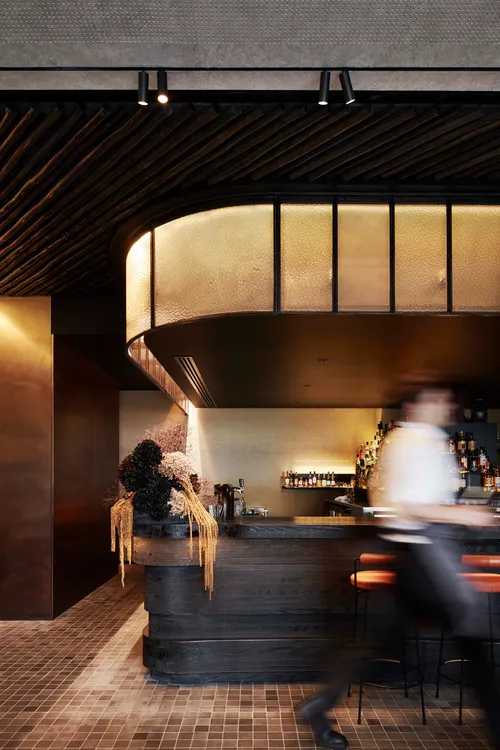An exceptional new dining destination in the heart of Auckland City
Advieh


Utilising heat as a thematic element, Advieh's design features materials like local basalt, cathedral glazing, smoked timbers, blackened steel, and ombre brass, evoking a sense of being forged or shaped by heat. The colour palette transitions from reds and oranges to acidic greens and blues, paying homage to volcanic sulphur pools and molten rock.
Advieh, InterContinental Hotel’s flagship eatery, is primed to quickly become one of the city’s most exciting new dining destinations, promising something fresh and unlike anything the city has seen before.


Nestled under the Intercontinental Hotel on Quay Street’s doorstep and connected to Commercial Bay’s Level One, the sweeping restaurant is the pièce de résistance for Auckland’s revitalised downtown district. The restaurant is fitted with sleek earthy touches and a glamorous gilded bar. Not to mention, the softest shearling seats. You can even snag a sneak peek at the chef’s dessert prep station as you enter.
A key planning move involves creating a natural flow through the open bar and kitchen, which boasts bespoke wraparound joinery with six layers of timber, each with unique organic forms, creating an undulating surface akin to geological sediment. Above, cathedral glass and blackened steel form a glazed feature, radiating red and orange hues, guiding guests through the space while highlighting kitchen and bar activity, reminiscent of magma's glow at night. This prominent glazing extends over the kitchen and shopfront, allowing guests to observe chefs preparing bakery items upon arrival.
Sleek, sophisticated and stylish, every aspect of the InterContinental Auckland’s fit out lives up to the elevated nature of its address — with Advieh’s design clearly inspired by some of the world’s most chic international eateries. The result is a dining destination that feels luxurious yet relaxed, and certainly stands apart from the crowd.



The project has delivered across five pillars of design, which include showcasing New Zealand food and wine; appealing to both international and local visitors; facilitating a seamless transition from day to night – from breakfast through dinner; prioritising locally sourced natural materials; and responsively addressing the site and the existing building's characteristics to reduce the embodied carbon footprint.

Collective Effort
Collective Effort




